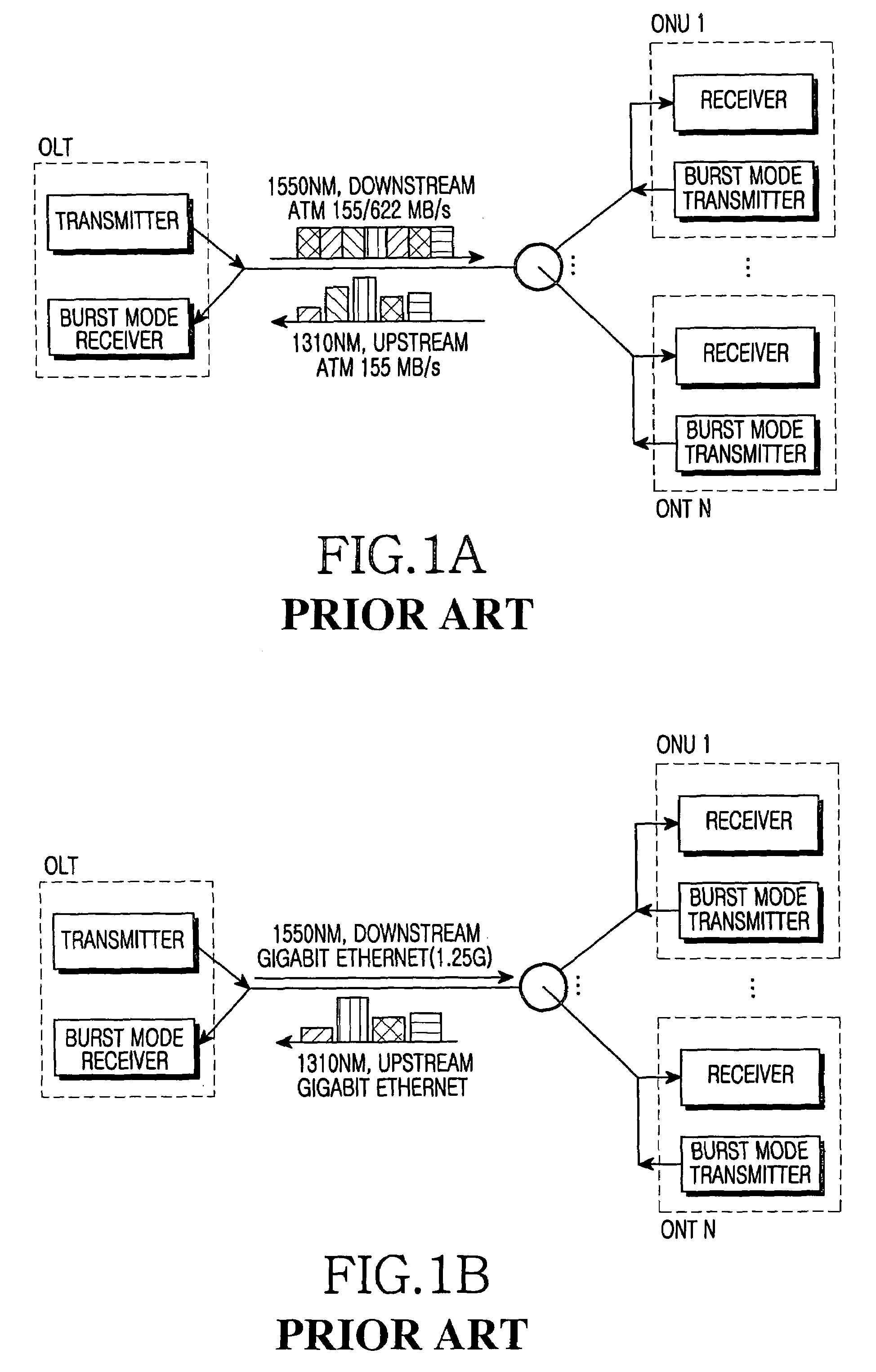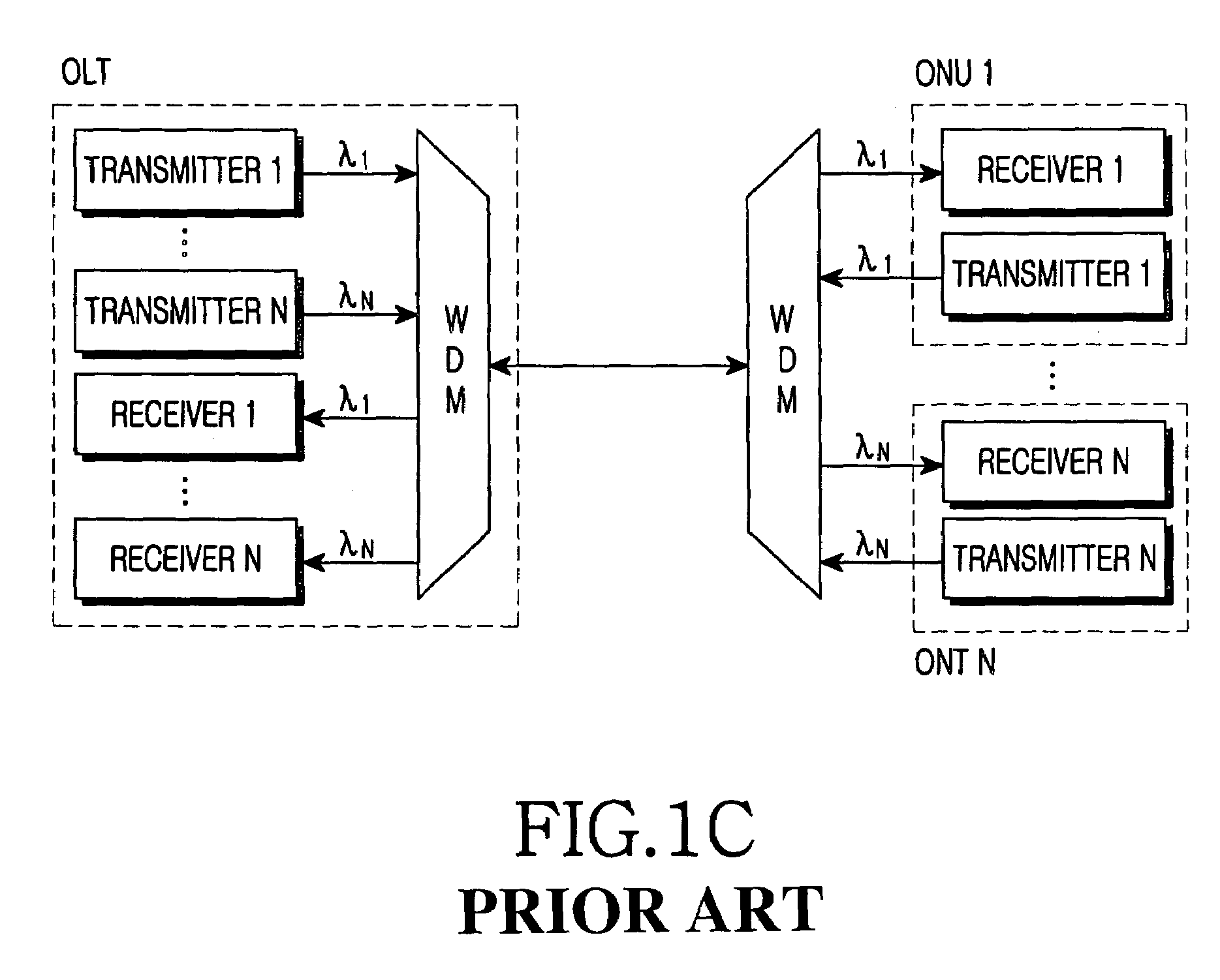Passive optical network employing code division multiple access
a technology of multiple access and optical network, applied in the field of passive optical network, can solve the problems of signal collision, signal collision, signal collision, etc., and achieve the effect of high speed
- Summary
- Abstract
- Description
- Claims
- Application Information
AI Technical Summary
Benefits of technology
Problems solved by technology
Method used
Image
Examples
Embodiment Construction
[0040]Hereinafter, a PON (Passive Optical Network) employing CDMA (Code Division Multiple Access) according to preferred aspects of the present invention will be described with reference to the accompanying drawings. For the purposes of clarity and simplicity, a detailed description of known functions and configurations incorporated herein will be omitted as it may make the subject matter of the present invention unclear.
[0041]FIG. 2 is a schematic view illustrating a PON employing CDMA according to the present invention.
[0042]Referring to FIG. 2, a PON employing CDMA according to the present invention comprises sixteen ONTs (Optical Network Terminals) 101 to 116 corresponding to the number of subscribers, a plurality of OLTs (Optical Line Terminals) 301 to 30N which transmit optical signals received from the ONTs 101 to 116 into a higher network and transmit signals received from the higher network into the ONTs 101 to 116, and an optical coupler 200.
[0043]Each of the ONTs 101 to 1...
PUM
 Login to View More
Login to View More Abstract
Description
Claims
Application Information
 Login to View More
Login to View More - R&D
- Intellectual Property
- Life Sciences
- Materials
- Tech Scout
- Unparalleled Data Quality
- Higher Quality Content
- 60% Fewer Hallucinations
Browse by: Latest US Patents, China's latest patents, Technical Efficacy Thesaurus, Application Domain, Technology Topic, Popular Technical Reports.
© 2025 PatSnap. All rights reserved.Legal|Privacy policy|Modern Slavery Act Transparency Statement|Sitemap|About US| Contact US: help@patsnap.com



